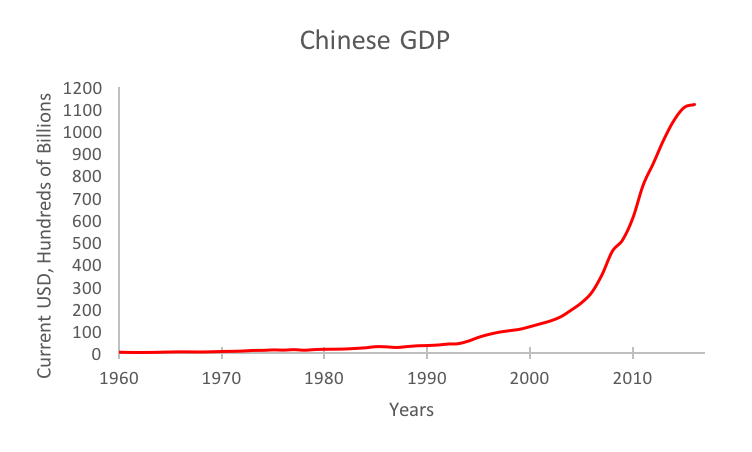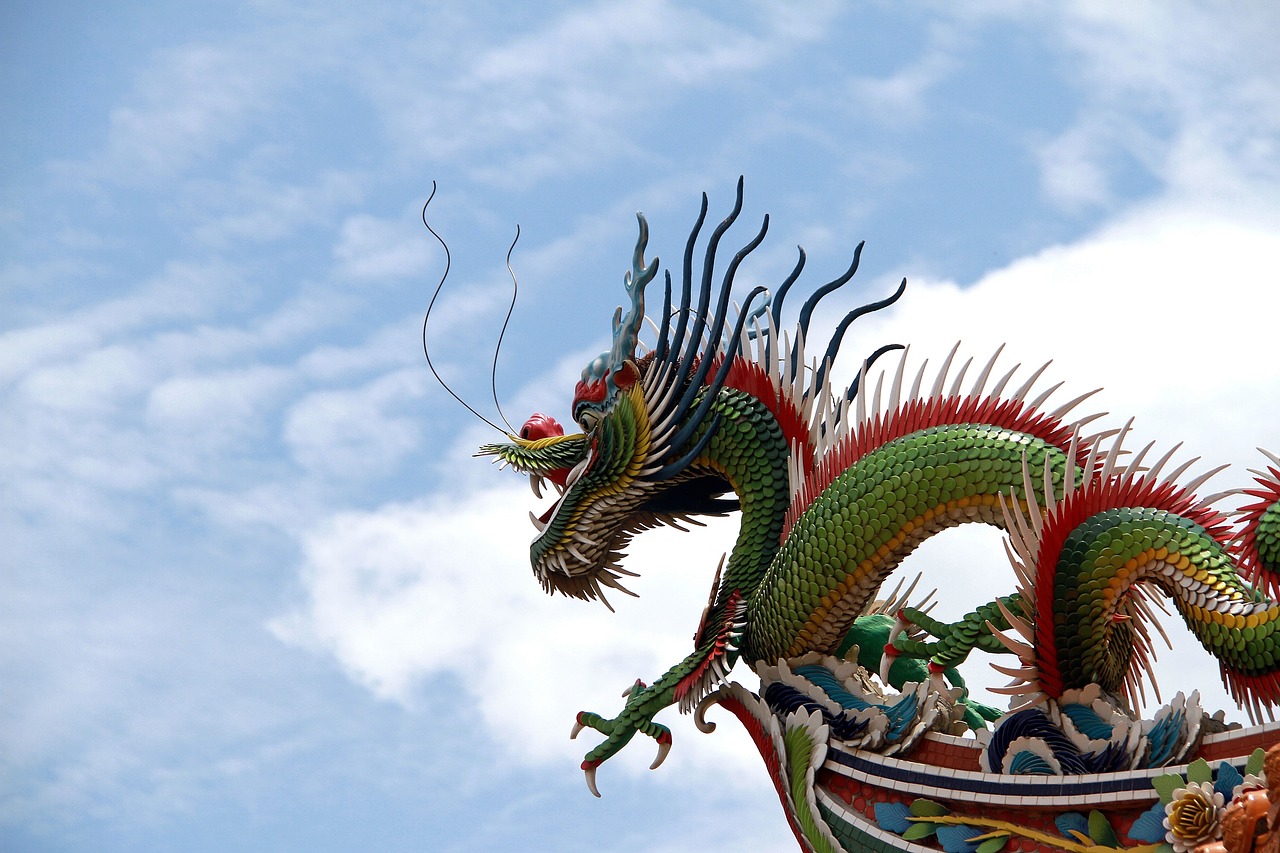Chinese President and General Secretary of the Chinese Communist Party Xi Jinping was given an incredibly rare opportunity to entirely reshape the country’s central leadership at the October 2017 National People Party’s Congress, allowing him to further consolidate power as he enters his second term of presidency. His economic initiatives like One Belt, One Road and the creation of China as a “moderately prosperous society” seem to take center stage in both domestic and foreign policy.
What has China accomplished in the past five years?
It is no secret that China has been pushing to rapidly modernize and consolidate domestic and international power in the past few decades. The country has undertaken massive economic reform since the death of Chairman Mao Zedong in 1976, which have all culminated to this moment: Chinese President and General Secretary of the Chinese Communist Party Xi Jinping has announced that China is in a new era of growth, emphasizing that by 2050 the country will achieve stardom as a “moderately prosperous society,” a society in which the domestic needs of the people have been adequately met, effectively squashing poverty, while also maintaining international economic and military strength.
In his three and a half hour opening speech that addressed the 2,354 representatives attending the 19th National Congress of the CCP on October 18th, President Xi announced with great triumph that China’s GDP had risen from 54 trillion RMB to 80 trillion RMB during his first five year tenure as President, contributing to thirty percent of total global growth. He also touted progress in China’s emerging digital economy, along with improvements in the country’s high-speed railway system, airports, and other infrastructural projects.
In fact, just one week before the start of the Congress, the People’s Republic launched a new campaign in the Beijing Exposition Hall entitled “Five Years of Sheer Endeavor,” which featured ten themed zones captivating China’s progress in scientific and technological development since 2013. Between 2003 and 2013, the National Science Foundation reported that China’s research and development investments increased 19.5% annually, so it would make sense that innovation has been on the upswing since Xi’s inauguration five years ago.
Xi also noted that China still suffers from many socioeconomic inadequacies, which are to be corrected in his second term as president and will contribute to China’s movement toward a moderately prosperous society. He underscored environmental conservation, disparities in urban and rural living standards, as well as a need to improve the real economy and foster more Chinese domestic innovation as some of China’s key problems.
Where is China going now?
Xi’s speech primarily focused on the “national rejuvenation of China” and the need to enforce unity in Communist Party leadership, but he also stressed the desire to transform China into a country of innovators. He directly mentioned the building of a space lab, 500 meter telescope, dark matter probes, and further improvement of island construction technology as focal points for China’s up and coming development sector. The national goal has been set at 2025 for the establishment of a thriving indigenous technology sector in China; however, this may cause friction with trading partners and external investors who may also want to take part in China’s booming growth, because the state is giving the domestic market monopolistic incentives.
Trade will obviously continue to remain an integral part of the Chinese economy, being the world’s largest exporter and second largest importer. In 2016, China’s exports were valued at $2.06 trillion, and its imports were valued at $1.32 trillion. Top exports include computers, broadcasting equipment, telephones, and other technology-related items; Xi’s push to inspire more innovation and technological development in China will only further increase the amount of gadgets coming out of the country and into places like the United States, Japan, Hong Kong, South Korea, and Germany.

Data source: World Bank China Data – GDP (current US$)
https://data.worldbank.org/country/china
After the defeat of the Trans-Pacific Partnership trade agreement earlier this year, China has even more incentive than ever to insert itself as the economic hegemon in East Asia. The Chinese were purposefully excluded from the deal, and United States President Donald Trump has consistently labelled China as a “currency manipulator” and touted aggressive trade policies in his new administration toward China: international trade and economic exchange are now as important as ever if the United States and China were to engage in a trade war.
Besides international trade, China’s main collaborative projects have been the One Belt, One Road initiative and the development of the Asian Infrastructure Investment Bank, two economic initiatives that put China center stage in the international political economy.
One Belt, One Road is an initiative that attempts to develop a newly realized railway route that maps the paths of the ancient Silk Road, trade routes that connected Mediterranean Europe, Arabia, and East Asia thousands of years ago. This project will help industrialize the western area of China, and Xi anticipates that this international cooperation will achieve policy, infrastructure, trade, financial, and people-to-people connectivity, creating new drivers of shared development. The initiative will also allow for more efficient transit of goods by land, opening up even more opportunities for Chinese trade.
The Asian Infrastructure Investment Bank is a multilateral development bank headquartered in Beijing that supports economic modernization in the Asia Pacific region. By spearheading the creation and implementation of the bank’s funds, China hopes to consolidate economic power in the region and emerge as a fully realized leader in international development.
China’s trajectory is thus more oriented toward leading a new era of international economic cooperation – with respect to trade, finance, and development – while also implementing new nationalistic policies at home that promote Party unity, loyalty, and strength.
What is the future for Chinese economic policy?
Many international economists often find themselves asking: “what would a world led by Chinese economic dominance look like? What is China’s next move in striving toward becoming a global superpower?” Should China continue to grow at a similar growth rate of approximately 8% per capita, its economy will surpass that of the United States within the next twenty years. The continuation of its massive trade surplus and development of a domestic innovation sector will undoubtedly contribute to this booming economic expansion and growing prosperity.
As we progress further into the twenty-first century, it has become more evident than ever that China is probably the greatest economic anomaly of our time. Not because of its upbringing as a modern socialist state, but because all of the odds seemed to be against China – the country is large with limited arable land, has a massive unskilled labor population not conducive to rapid industrialization, and suffers from overcrowding in its huge economic epicenters along the coast of the Pacific. And yet, China has beaten these odds and transformed itself into an incredibly strong economic power that is on its way to becoming a modernized, global, tour de force.
China is becoming more important than ever in the twenty-first century as its economic policies take center stage to make it a possible global superpower. If people aren’t talking about the United States, they’re talking about China!
Are you trading with Chinese companies or looking to export in China? Trade Finance Global have put together a series of exporting guides and a ‘Doing Business in China’ guide, here.





























